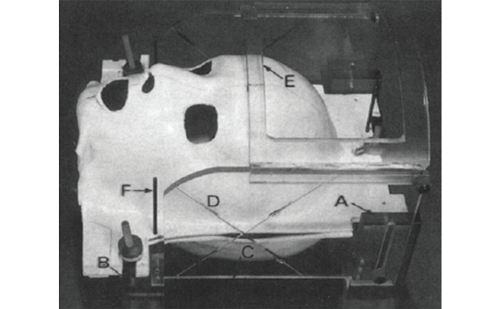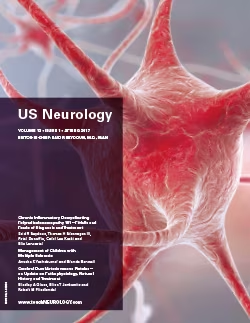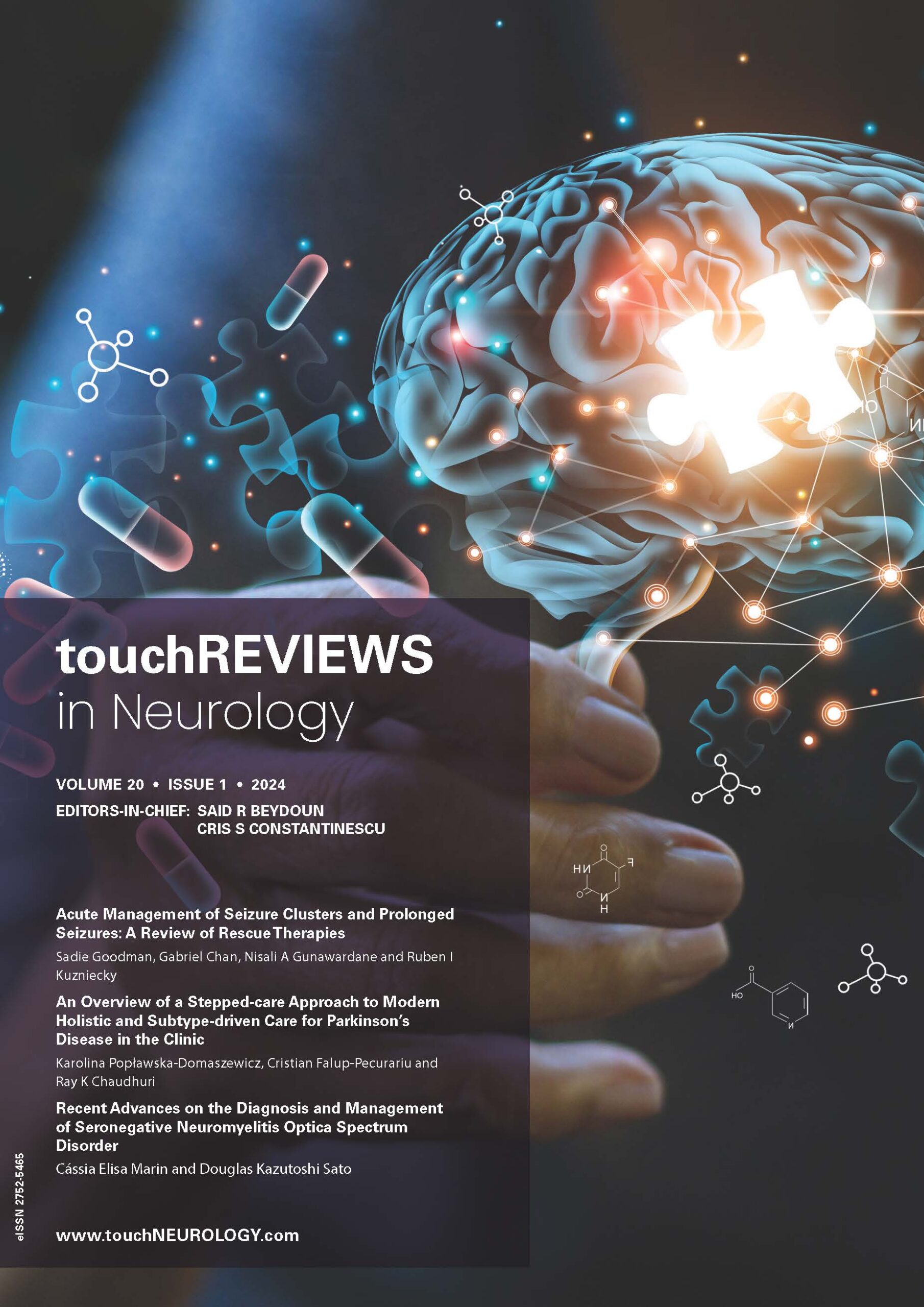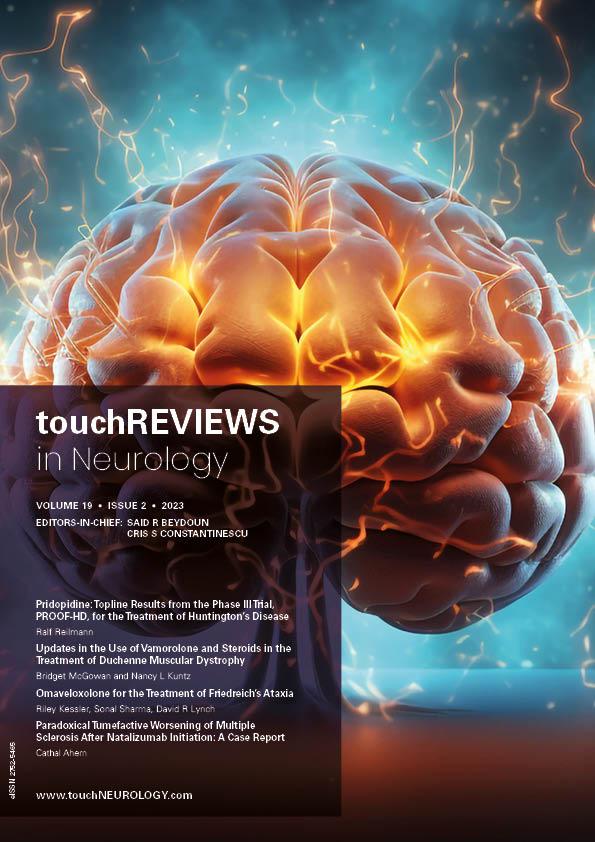US NEUROLOGY – VOLUME 13 ISSUE 1 – SPRING 2017
Welcome to the spring 2017 edition of US Neurology. We are delighted to share this selection of topical reviews and editorials with you.
This issue is introduced by our new Editorial Board member, Dr Richard Rison. We’re delighted to have him as a member of the Board and we look forward to working with him. Our second introduction is the new Editor-in-Chief for US Neurology, Dr Said Beydoun. You can read a letter from him in this edition. With Dr Beydoun’s input and expertise, we hope to continue our journal development to bring our readers the most up-to-date, topical content. Also in this edition, we have two informative reviews on chronic inflammatory demyelinating polyneuropathy; a timely review from Oscar Mayer et al. on pulmonary care in Duchenne muscular dystrophy; an update on pediatric multiple sclerosis from Anusha Yeshokuma and Brenda Banwell; and a review on cerebral dural arteriovenous fistulas from Bradley Gross et al.
We hope you enjoy this issue of US Neurology and find it useful and relevant to your interests.
Welcome to the latest edition of US Neurology, which features a wide range of articles that reflect the rapid pace of progress in neurology. We begin with two review articles on the subject of chronic inflammatory demyelinating polyradiculoneuropathy (CIDP) a challenging condition as it can mimic other neuropathies and can lead to chronic disability if […]
I am delighted to take on the role of Editor-in-Chief for European Neurological Review and would like to introduce myself. I studied medicine in Boston University, US, and specialised in neurology in Philadelphia. I then moved to Europe and worked on multiple sclerosis (MS) in Switzerland for two years. For the past 17 years, I […]
Special Report
As its mission states, the American Epilepsy Society (AES) is working to eradicate epilepsy and its consequences. While this lofty goal may not yet be visible on the horizon, researchers and physicians who treat patients with epilepsy are making progress, as evidenced by the research and latest practices presented at the AES 70th Annual Meeting, […]
Editorial
The clostridial neurotoxins (CNTs) (tetanus toxin [TeNT] and seven serologically distinct botulinum neurotoxins [BoNT/A–BoNT/D]), are among the deadliest agents known. They are bacterial enzymes produced by anaerobic, spore-forming bacteria of the genus Clostridium. Each toxin is composed of a heavy chain (HC) and a light chain (LC) linked via a disulfide bond. CNTs bind to […]
Review
Chronic inflammatory demyelinating polyradiculoneuropathy (CIDP) is an autoimmune demyelinating polyradiculoneuropathy characterized by chronically progressive weakness and impaired sensory function in the lower and upper extremities.1 Symptoms, which are progressive over at least 8 weeks, may include weakness of the arms and legs (both proximal and distal), loss of vibration and joint position sense, poor balance, […]
Chronic inflammatory demyelinating polyneuropathy (CIDP) is an acquired immune-mediated disease that evolves in a progressive or relapsing pattern over months to years. Although “typical” CIDP is characterized by symmetric proximal and distal motor and sensory deficits, it is now recognized that multifocal (asymmetric), distally predominant, pure sensory, and pure motor variants also fall within the […]
Duchenne muscular dystrophy (DMD), the most common and devastating type of muscular dystrophy,1 is characterised by the absence of the protein dystrophin, which causes premature muscle cell failure and leads to progressive muscle atrophy and loss. The condition is typically diagnosed at age 3–5 years when children start to show signs of physical disability including […]
Multiple sclerosis (MS) onset during childhood or adolescence follows a relapsing-remitting pattern, with a high early relapse frequency, and is associated with a risk for cognitive impairment and future physical disability. Acute management of relapses, modulation of chronic disease course, cognitive evaluations and strategies for academic modifications, and multidisciplinary team approaches to the management of […]
Dural arteriovenous fistulas (dAVF)s are unique to the neuraxis as the arteriovenous shunt site is contained within the dural leaflets. They may be discovered incidentally or in a workup of a variety of potential neurological sequelae, including pulsatile tinnitus, ocular symptoms, focal neurologic deficits as a result of venous hypertension or even intracranial hemorrhage.1–7 Symptoms […]

Trending Topic
Intracranial radiosurgery, no matter the means or methods of administration, is predicated on a core set of principles, including head immobilization and precise delineation of the treatment target. For some five decades after Leksell introduced the concept of stereotactic radiosurgery in 1951,1 rigid head fixation via an invasive device was an integral component towards these ends. […]
Journal Archive
touchREVIEWS in Neurology is a peer-reviewed, free-to-access, bi-annual neurology journal comprising review articles, case reports, practice guides, theoretical discussions, and original research. It features balanced and comprehensive articles written by leading authorities, addressing the most important and salient developments in the field of neurology.
Latest articles videos and clinical updates - straight to your inbox
Log into your Touch Account
Earn and track your CME credits on the go, save articles for later, and follow the latest congress coverage.
Register now for FREE Access
Register for free to hear about the latest expert-led education, peer-reviewed articles, conference highlights, and innovative CME activities.
Sign up with an Email
Or use a Social Account.
This Functionality is for
Members Only
Explore the latest in medical education and stay current in your field. Create a free account to track your learning.













